Duality
In each of the puzzles below, shade some cells in the grid, possibly including cells containing clues.
Kurotto
Each number in an unshaded cell indicates the number of shaded cells in connected groups sharing an edge with that cell. 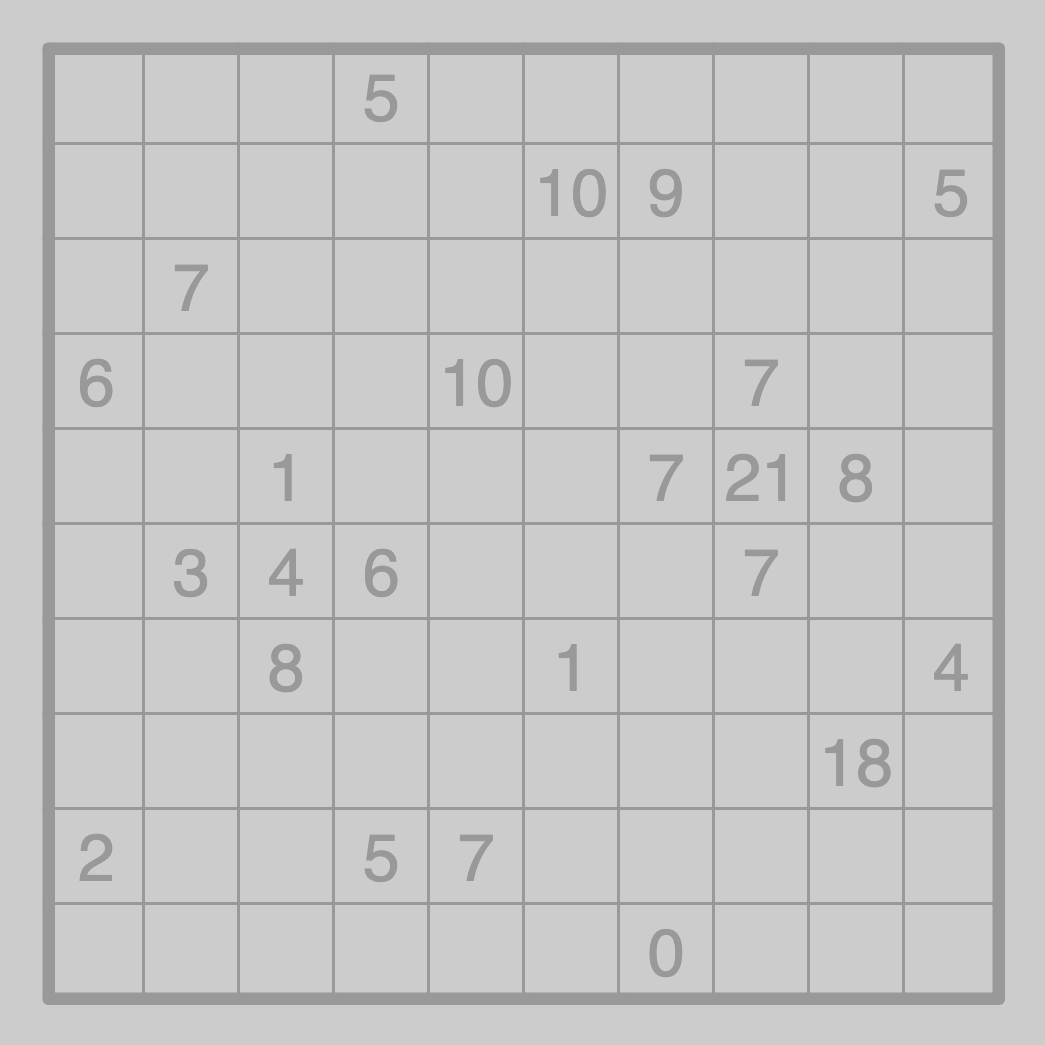 Solve this puzzle using Penpa+.
Solve this puzzle using Penpa+. |
Chocona
Each number indicates the number of shaded cells in that region. The shaded cells must form rectangles independently of region borders, and the rectangles must not touch orthogonally. 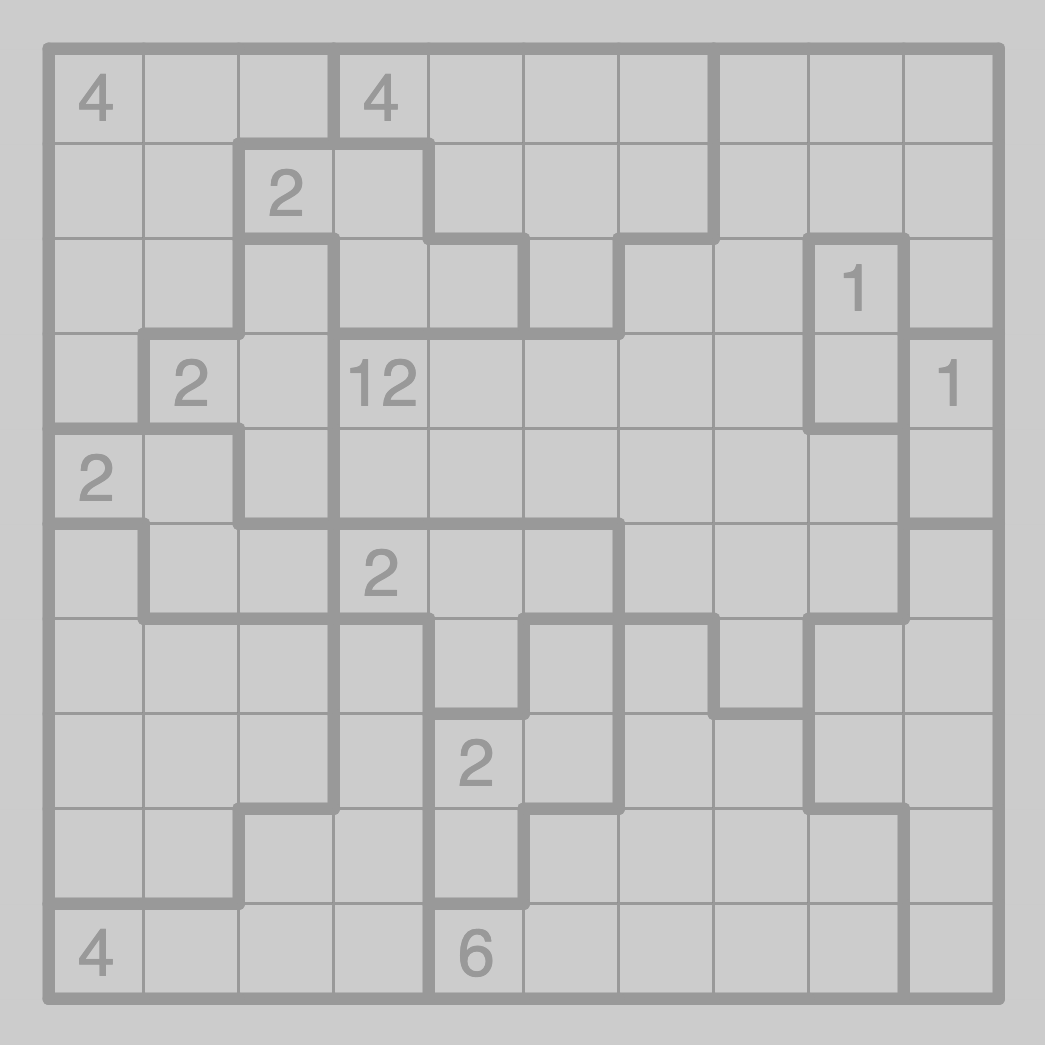 Solve this puzzle using Penpa+.
Solve this puzzle using Penpa+. |
Tapa
The numbers in an unshaded cell indicate the lengths of consecutive shaded blocks among the orthogonally and diagonally neighboring cells, in no particular order. The shaded cells must form a single orthogonally connected group, and no 2x2 square may be entirely shaded.  Solve this puzzle using Penpa+.
Solve this puzzle using Penpa+. |
Corral
Each number in a cell (shaded or unshaded) indicates the number of unshaded cells connected horizontally or vertically to the cell, including itself if it is also unshaded. The unshaded cells must form a single orthogonally connected group, and all shaded cells must be orthogonally connected to the edge of the grid, possibly via other shaded cells.  Solve this puzzle using Penpa+.
Solve this puzzle using Penpa+. |
Stostone
At least one cell in each region must be shaded, and the shaded cells within a region must form an orthogonally connected group, called a “stone”. No two stones (in different regions) may be orthogonally adjacent to each other. If all stones fall down, they must cover exactly the bottom half of the grid. 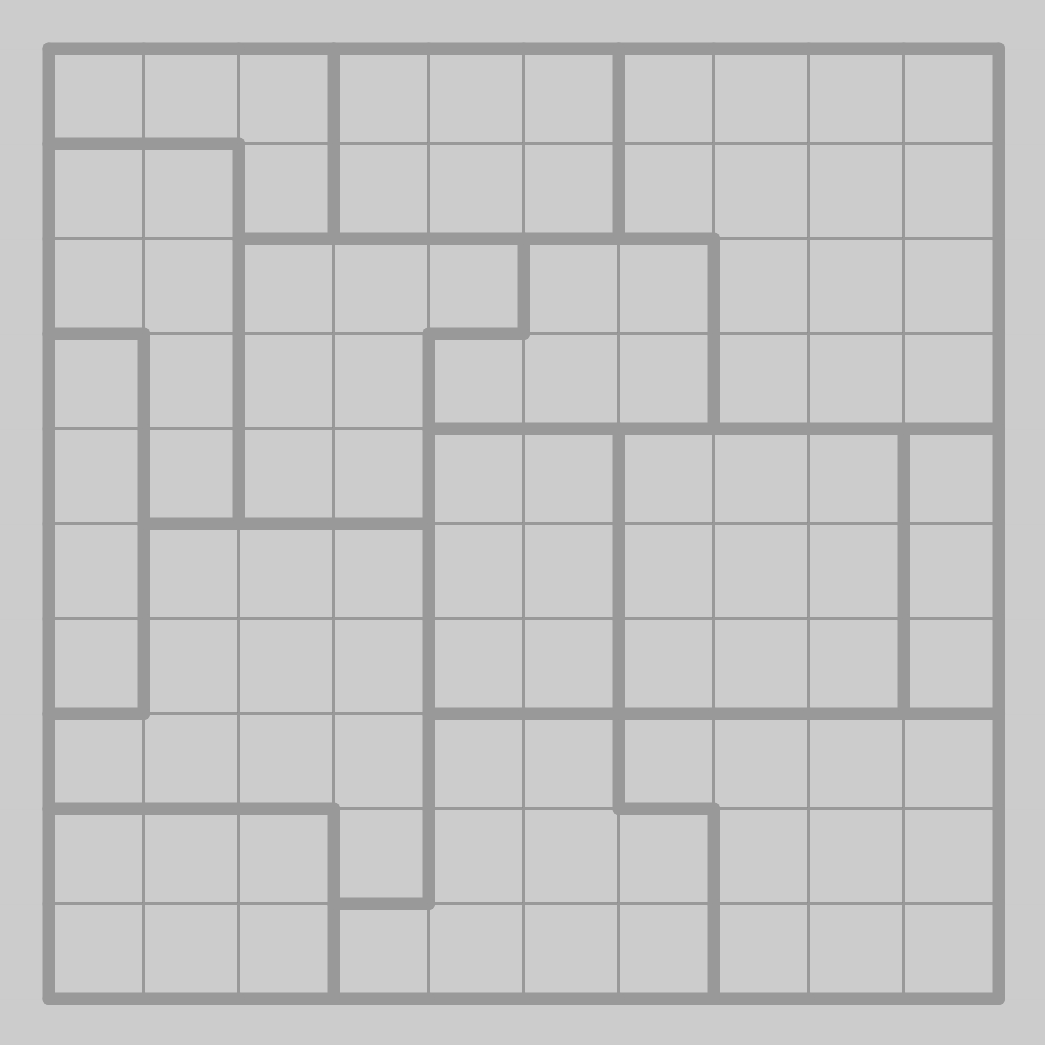 Solve this puzzle using Penpa+.
Solve this puzzle using Penpa+. |
Paint by Numbers
The numbers to the left or top of the grid indicate the lengths of consecutive groups of shaded cells in that row or column in order, from left to right or from top to bottom. A question mark may represent any positive integer. 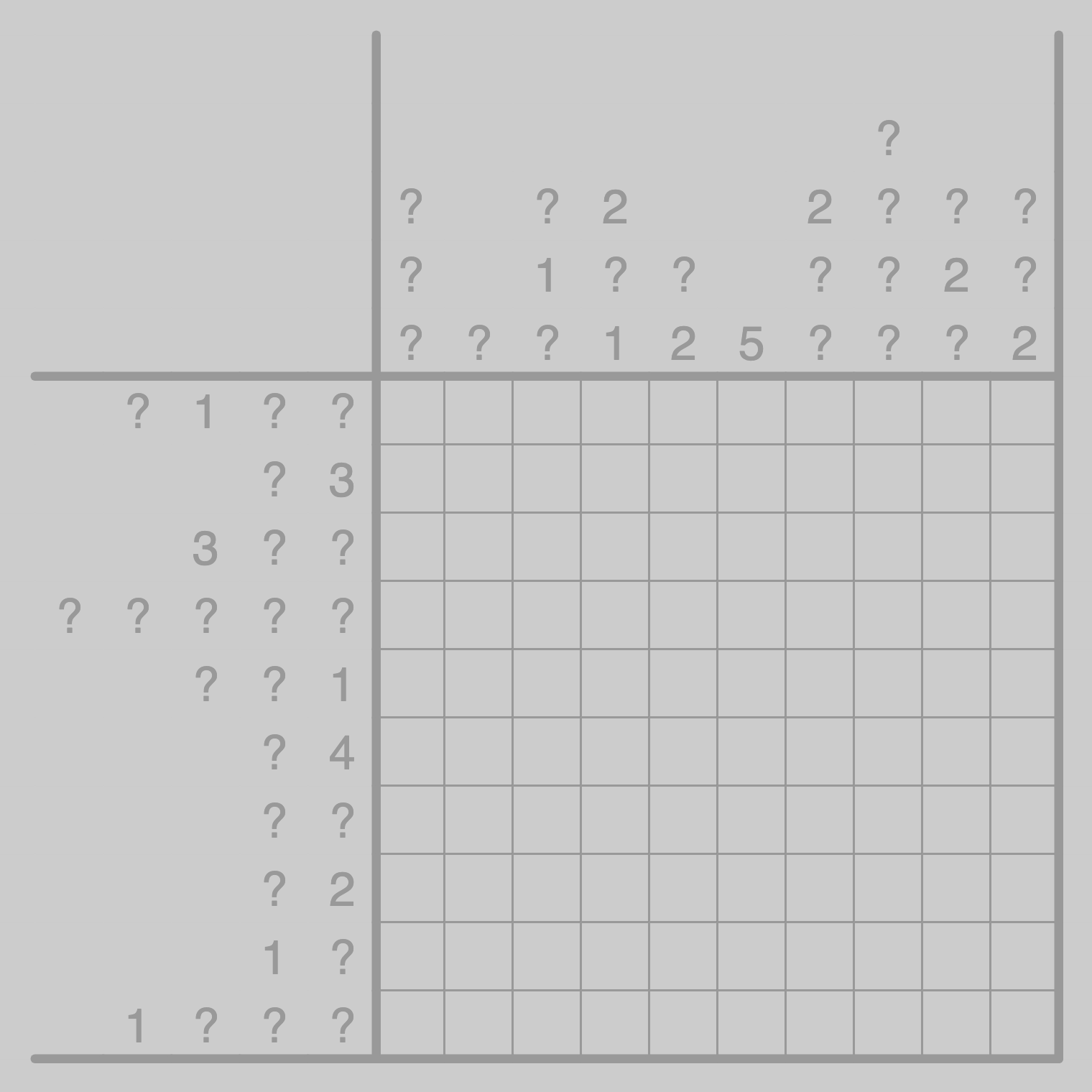 Solve this puzzle using Penpa+.
Solve this puzzle using Penpa+. |
| Kurotto | Chocona | ||||||||||||||||||||||||||||||
| Each number in an unshaded cell indicates the number of shaded cells in connected groups sharing an edge with that cell. | Each number indicates the number of shaded cells in that region. The shaded cells must form rectangles independently of region borders, and the rectangles must not touch orthogonally. | ||||||||||||||||||||||||||||||
| 5 | 4 | 4 | |||||||||||||||||||||||||||||
| 10 | 9 | 5 | 2 | ||||||||||||||||||||||||||||
| 7 | 1 | ||||||||||||||||||||||||||||||
| 6 | 10 | 7 | 2 | 12 | 1 | ||||||||||||||||||||||||||
| 1 | 7 | 21 | 8 | 2 | |||||||||||||||||||||||||||
| 3 | 4 | 6 | 7 | 2 | |||||||||||||||||||||||||||
| 8 | 1 | 4 | |||||||||||||||||||||||||||||
| 18 | 2 | ||||||||||||||||||||||||||||||
| 2 | 5 | 7 | |||||||||||||||||||||||||||||
| 0 | 4 | 6 | |||||||||||||||||||||||||||||
| Solve this puzzle using Penpa+. | Solve this puzzle using Penpa+. | ||||||||||||||||||||||||||||||
| Tapa | Corral | ||||||||||||||||||||||||||||||
| The numbers in an unshaded cell indicate the lengths of consecutive shaded blocks among the orthogonally and diagonally neighboring cells, in no particular order. The shaded cells must form a single orthogonally connected group, and no 2x2 square may be entirely shaded. | Each number in a cell (shaded or unshaded) indicates the number of unshaded cells connected horizontally or vertically to the cell, including itself if it is also unshaded. The unshaded cells must form a single orthogonally connected group, and all shaded cells must be orthogonally connected to the edge of the grid, possibly via other shaded cells. | ||||||||||||||||||||||||||||||
| 1 | 2 | 7 | |||||||||||||||||||||||||||||
| 6 | 4 | ||||||||||||||||||||||||||||||
| 7 | 5 | ||||||||||||||||||||||||||||||
| 7 | 6 | ||||||||||||||||||||||||||||||
| '3,2 | '2,1 | 3 | 4 | ||||||||||||||||||||||||||||
| '3,1,1 | '2,1,1 | ||||||||||||||||||||||||||||||
| '5,1 | 3 | ||||||||||||||||||||||||||||||
| '2,2 | '3,1 | ||||||||||||||||||||||||||||||
| 3 | 4 | ||||||||||||||||||||||||||||||
| 4 | 4 | 4 | |||||||||||||||||||||||||||||
| Solve this puzzle using Penpa+. | Solve this puzzle using Penpa+. | ||||||||||||||||||||||||||||||
| Stostone | Paint by Numbers | ||||||||||||||||||||||||||||||
| At least one cell in each region must be shaded, and the shaded cells within a region must form an orthogonally connected group, called a “stone”. No two stones (in different regions) may be orthogonally adjacent to each other. If all stones fall down, they must cover exactly the bottom half of the grid. | The numbers to the left or top of the grid indicate the lengths of consecutive groups of shaded cells in that row or column in order, from left to right or from top to bottom. A question mark may represent any positive integer. | ||||||||||||||||||||||||||||||
| ? | |||||||||||||||||||||||||||||||
| ? | ? | 2 | 2 | ? | ? | ? | |||||||||||||||||||||||||
| ? | 1 | ? | ? | ? | ? | 2 | ? | ||||||||||||||||||||||||
| ? | ? | ? | 1 | 2 | 5 | ? | ? | ? | 2 | ||||||||||||||||||||||
| ? | 1 | ? | ? | ||||||||||||||||||||||||||||
| ? | 3 | ||||||||||||||||||||||||||||||
| 3 | ? | ? | |||||||||||||||||||||||||||||
| ? | ? | ? | ? | ? | |||||||||||||||||||||||||||
| ? | ? | 1 | |||||||||||||||||||||||||||||
| ? | 4 | ||||||||||||||||||||||||||||||
| Solve this puzzle using Penpa+. | ? | ? | |||||||||||||||||||||||||||||
| ? | 2 | ||||||||||||||||||||||||||||||
| 1 | ? | ||||||||||||||||||||||||||||||
| 1 | ? | ? | ? | ||||||||||||||||||||||||||||
| Solve this puzzle using Penpa+. | |||||||||||||||||||||||||||||||
Each question mark is a valid letter.
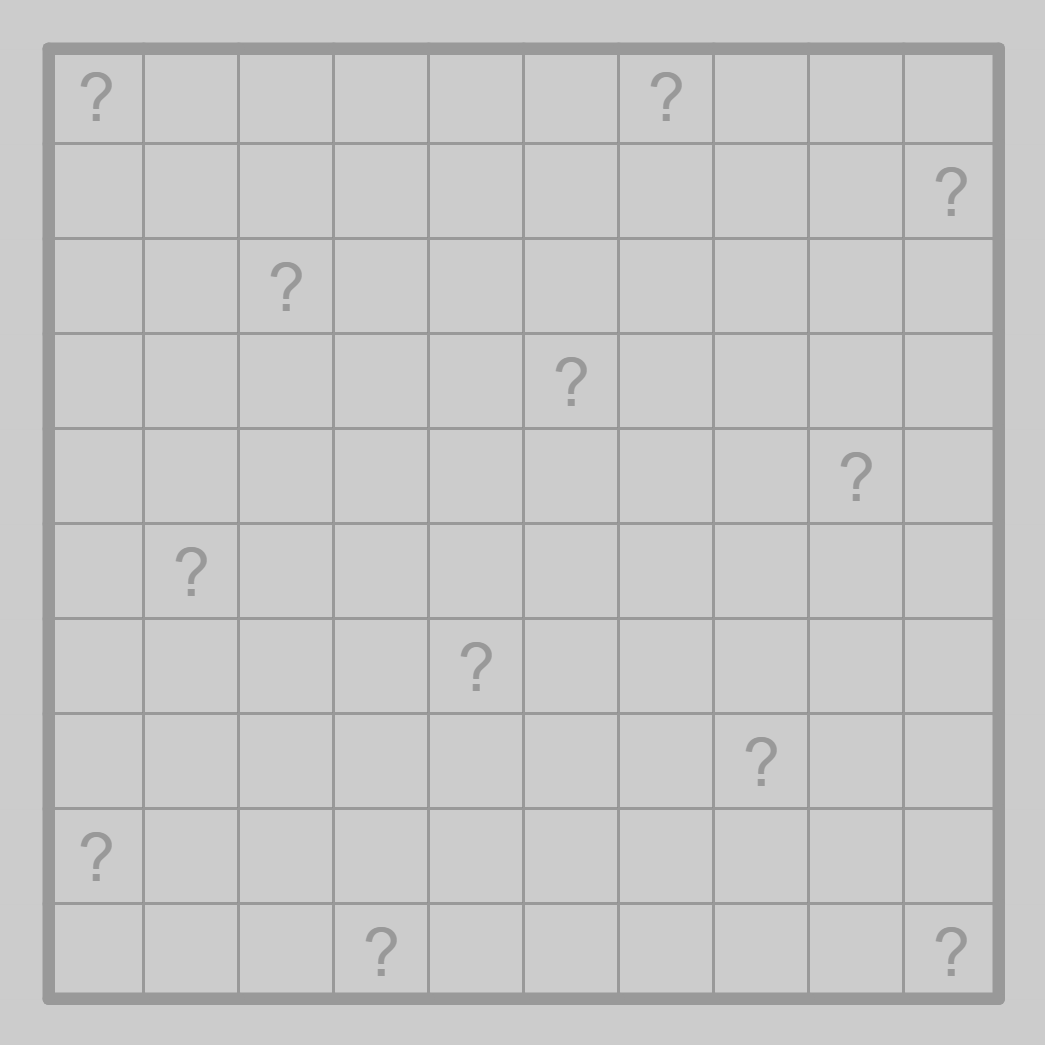
| ? | ? | ||||||||
| ? | |||||||||
| ? | |||||||||
| ? | |||||||||
| ? | |||||||||
| ? | |||||||||
| ? | |||||||||
| ? | |||||||||
| ? | |||||||||
| ? | ? |